Nintendo’s failed attempts to create a CD-ROM add-on for their Super Nintendo Entertainment System is one of the most consequential corporate blunders in videogame history. It most infamously hastened the creation of Sony’s PlayStation, which in the ensuing years became their primary market competitor. A less self-immolating result was Philips, a Dutch electronics manufacturer with no videogame development experience, wound up with the rights to produce several videogames based on Nintendo’s Zelda characters for their CD-i platform. The CD-i was a multimedia player, not a videogame console, better suited to playing what we would describe today as PowerPoint presentations than videogames. Philips made the videogames anyway. The results, Link: The Faces of Evil and Zelda: The Wand of Gamelon, earned instant scorn as the worst videogames to feature the Zelda characters. Their unresponsive controls, slow runtimes, and bizarre animated cutscenes are recalled today as targets of internet mockery.
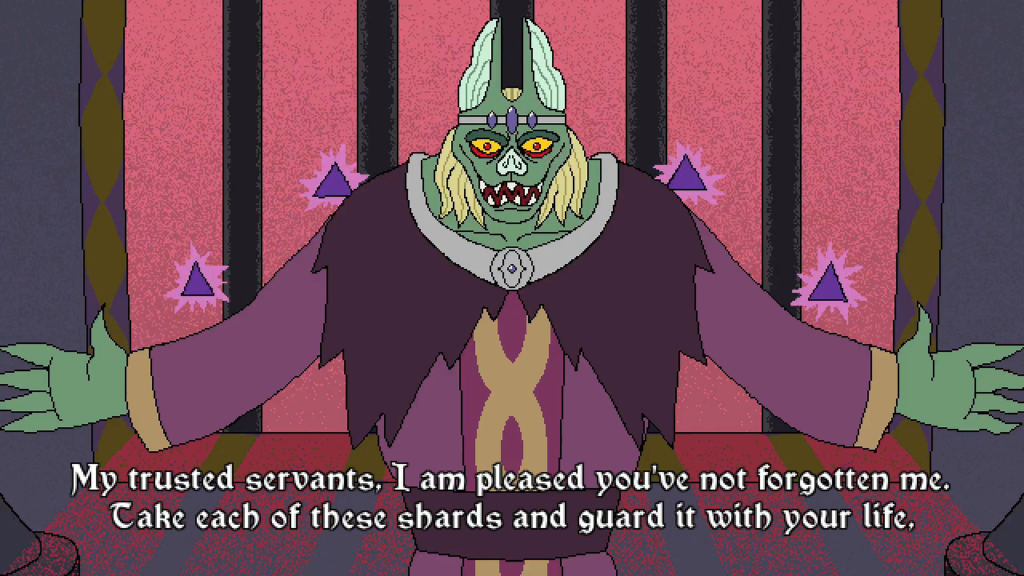
Arzette: The Jewel of Faramore is one developer’s cheeky attempt to take the visual aesthetics and platforming designs of Link: The Faces of Evil and Zelda: The Wand of Gamelon, infuse them with indie spirit and retro know-how, and turn them into a fun and competent videogame. I play as Arzette, the princess of Faramore, who has already led one successful campaign against the demon lord Daimur, imprisoning him in the Book of Oakurin using the Jewel of Faramore as its key. Ten years later, one of Daimur’s surviving servants frees his master from the Book, who scatters the fragments of the Jewel of Faramore across the kingdom and resumes his campaign. I play as Arzette as she explores Faramore’s fourteen levels in search of the Jewel’s five fragments in the hopes that she can return Daimur to his prison and bring peace to the kingdom once again.
It would be fair to say that the Zelda CD-i videogames would be almost forgotten if not for YouTube. It kept their animated cutscenes alive in the popular consciousness. It is these animations, not actual gameplay, which are remembered when the videogames are discussed today. Their idiosyncratic styles are faithfully reproduced in Arzette: The Jewel of Faramore, triggering as the princess encounters non-player characters placed across the kingdom.
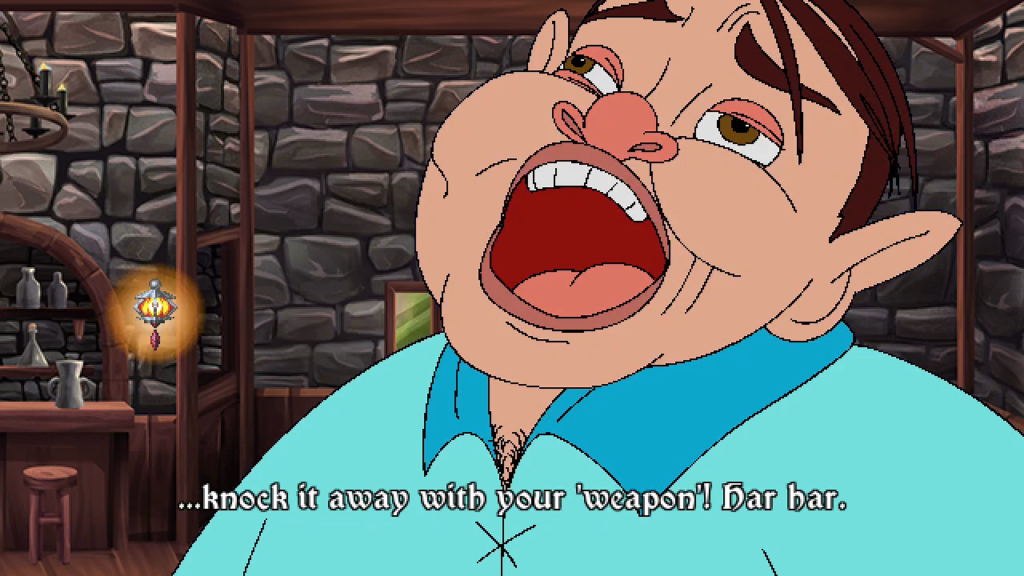
The first thing I notice about these cutscenes is the image quality. There are no smooth lines making up these animated characters. Every curve and angle is accentuated by an ugly, jagged pixel, as though each animation was rendered in a low resolution and then blown up for use in this high definition presentation. How each character moves carries a similar aura of grand ambition and clumsy inexperience. The proportions of characters’ limbs change from scene to scene, or even from cut to cut. Characters slide in and out of frame and the camera zooms and recedes for no apparent reason, infusing even the most mundane interactions with manic hyperactivity. Every cutscene exudes inexperience, like a movie made by animators who have never animated before and arranged by an editor who has never edited before.
It takes an incredible talent to look at something done amateurishly and incompetently and reproduce it faithfully—to do bad, well—and Arzette: The Jewel of Faramore’s animations accomplish this feat with remarkable verisimilitude. It strolls on a line suspended between pastiche and parody, never wavering in either direction for even a second.
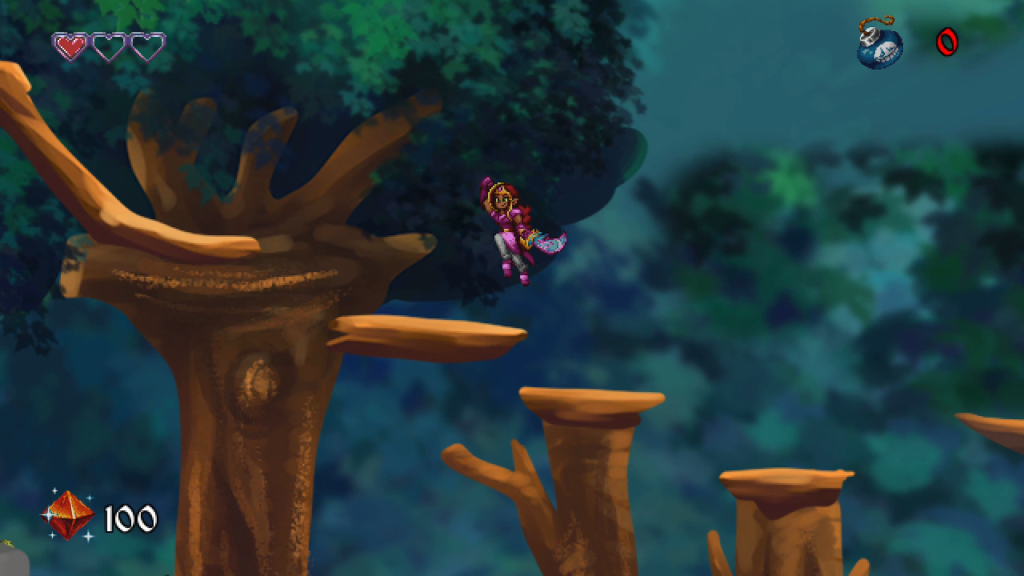
Though less iconic, the level and scenario design of the CD-i Zelda videogames are also faithfully reproduced in Arzette: The Jewel of Faramore. Arzette, created with traditional pixel art, explores two-dimensional linear platforming environments to progress through the story. Levels are represented by pre-rendered images—essentially, high resolution jpegs—a technique that is unremarkable today but was a new and groundbreaking technology on the CD-i. Their use here is intentional.
The first level Arzette explores is the Durridin Forest, and it serves as an apt introduction to how the rest of the videogame will play. The primary goal in every level is for Arzette to reach its exit at its far end. Durridin is slightly unique from others in that its exit is found at the very top of the forest instead of at its far right. Arzette must jump along a tangle of low tree branches, climb up through the center of a hollowed out trunk that serves as a bridging tower, and then zig-zag across the leafy treetops to reach the level’s end.
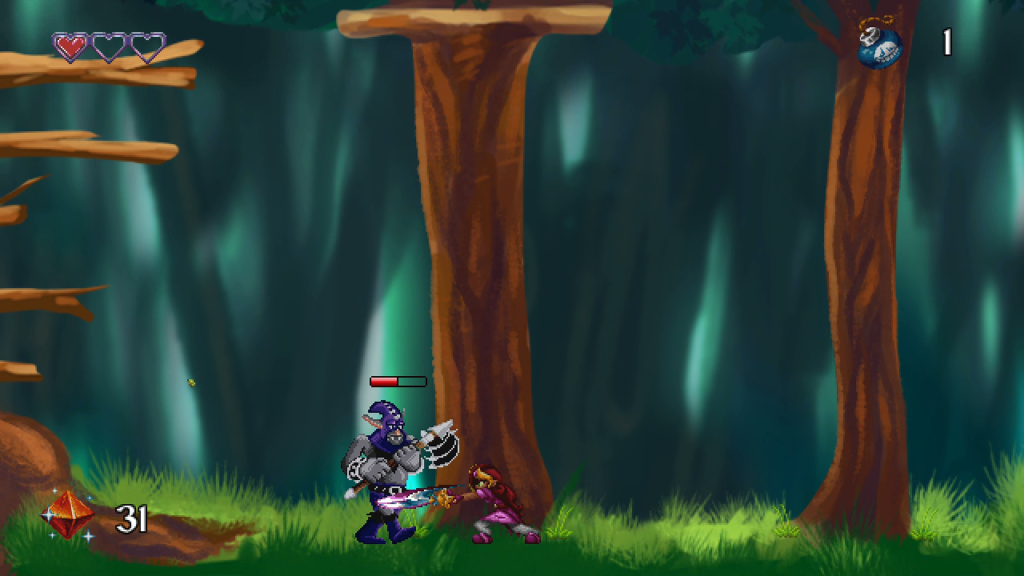
Arzette is bedeviled along the way by Daimur’s minions. Rat-tailed goblins equipped with sickles are mostly harmless, but occasionally fling their weapons at Arzette without warning. Cockatrices rest on high perches until the princess draws near, then swoop at her head. Both are easily dispatched with a single well-timed swing from Arzette’s sword. The most dangerous enemies are the orcs; dressed in purple executioner’s hoods and wielding giant axes, they deal much more damage than goblins or cockatrices and take two hits from Arzette’s sword before disappearing in a burst of red energy.
Getting to the top of Durridin Forest is no easy task. Arzette has only a few hit points at the outset so even strikes from weak enemies take a notable toll. Continues are thankfully infinite and checkpoints numerous even on the hardest default difficulty. The best way to pass through a difficult area is often to let Arzette die so she may try again with a refreshed hit point meter.
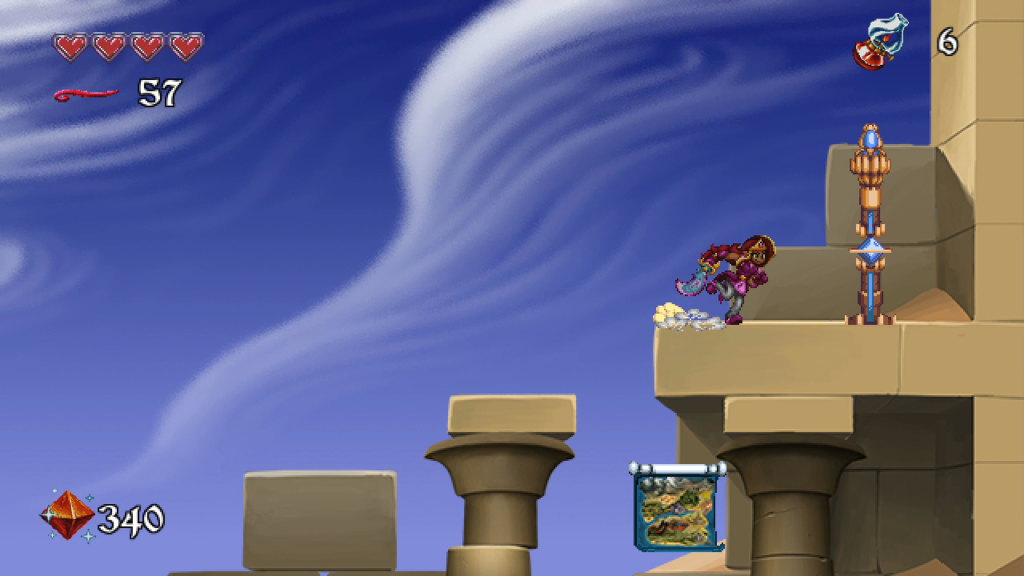
Durridin Forest’s end is marked by a beacon, a brown spire containing a blue crystal that shoots a beam of light into the sky when Arzette touches it with the tip of her sword blade. Activating a beacon unlocks more levels from the Faramore map screen. Not every level contains a beacon, but to reassemble the Jewel of Faramore and banish Daimur, Arzette will have to find and activate five of them across the kingdom.
The beacon Arzette activates in Durridin Forest is important, but not as important as an NPC she encounters about halfway through the level. Cypress is a wolfman, whose smart blazer and neat spectacles bely the hungering anger he barely contains while describing his situation. He wants to move into Faramore Town, but the mayor has refused him a house. He appeals to Arzette to intervene.
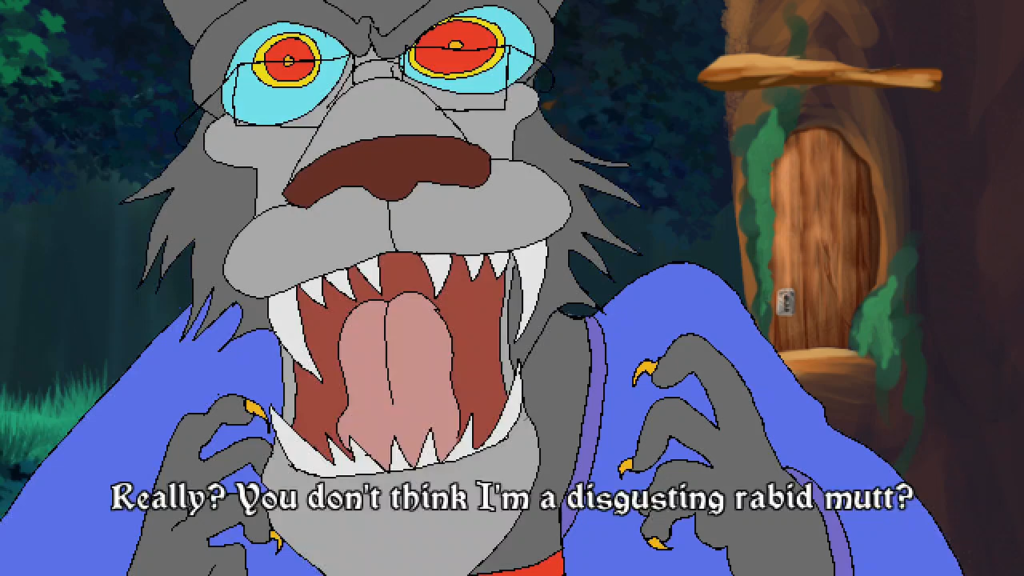
Arzette returns to Faramore Town and speaks with the mayor, who reluctantly agrees to let Cypress move into one of the empty houses. At this point Arzette is prompted to return to Cypress. Having just finished Durridin Forest a few minutes before, I am unenthused to replay it already, so I choose to ignore the quest for the moment and send Arzette to the first of the new levels unlocked by the beacon.
When Arzette enters the Cogwyn Caves level, she is warned by a spelunker, speaking through a cloud of pipe smoke, about the caves’ darkness. He gifts her a magic rope she can use to return to the world map if she becomes trapped. When Arzette enters the actual caves, she finds the spelunker was not exaggerating. The screen turns pitch black. Only a few torches scattered around the backdrop and a tiny circle of light around Arzette keep the level from being impossible to complete. I am able to guide Arzette to the level’s exit through the blackness and many tumbles into deadly bottomless pits, but am unable to perform a thorough exploration. When I send Arzette to the third level, Anju Desert, she encounters a similar murky situation inside its pyramids.
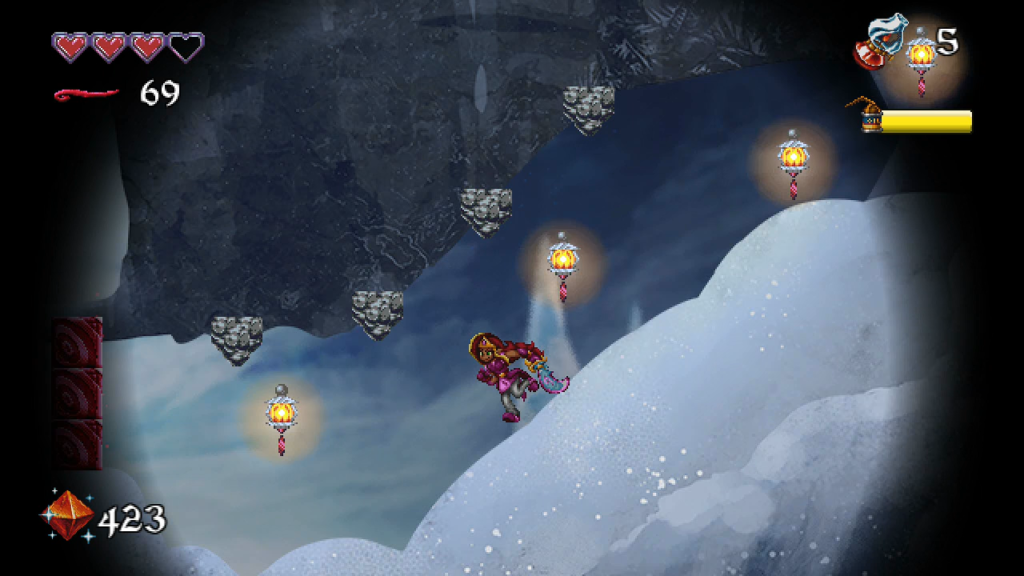
Arzette encounters this problem because I resist completing Cypress’ quest. He offers a reward for gaining residence in Faramore Town: an old lantern. This item greatly increases the circle of light around Arzette inside Faramore’s many dark interior spaces, making them much easier to navigate without resorting to rote memorization through trial and error. The quest introduces in the harsh, punishing manner of early 1990s videogame design a fundamental lesson: To be successful in Arzette: The Jewel of Faramore, I will have to play levels more than once. In a few cases I even have to replay a level multiple times in a row. Resisting this fact will make Arzette’s quest much more difficult, if not impossible to complete.
Arzette: The Jewel of Faramore’s retro philosophy is to pick-and-choose what elements it retains from Link: The Faces of Evil and Zelda: The Wand of Gamelon. It updates many outdated videogame design concepts to make them more palatable to a modern audience, yet maintains others so they still evoke the early 1990s era of design.
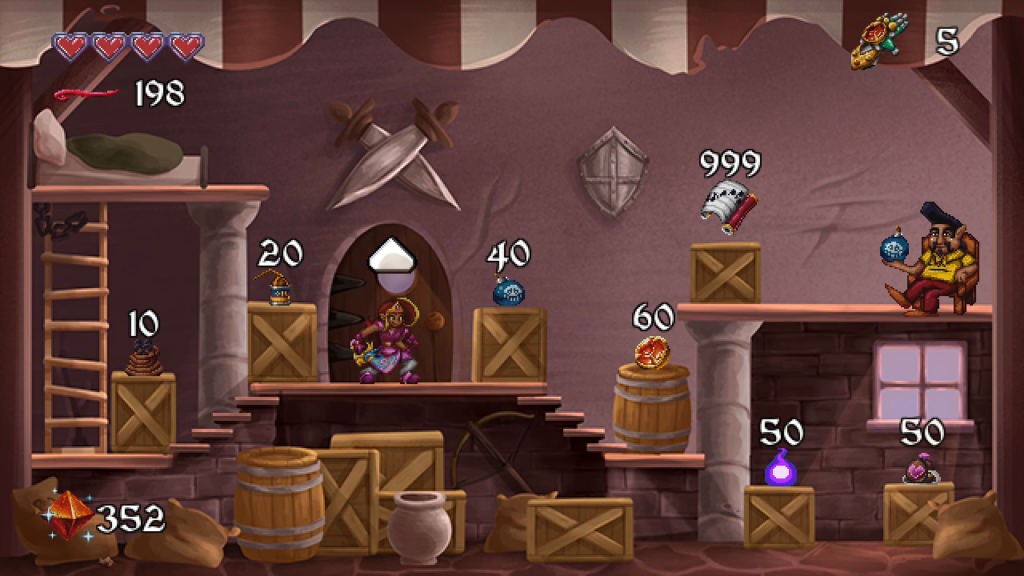
Arzette’s hit point pool is initially small and healing options are limited, but she has infinite continues. She must carry items with limited uses to progress through levels—bombs, lantern oil, monster souls—but plentiful restocks are spread throughout each level and they may be purchased for reasonable prices in Faramore Town. Arzette is responsive to control inputs, but I must constantly visit an inventory screen to change her active item despite the many unused buttons on a modern gamepad. Finally and most significantly, levels are succinct and filled with secrets, but must be replayed repeatedly, perhaps to excess.
There’s a purposeful balance struck between these unrefined, old ideas that are relics from videogames’ relative youth and the more confident, contemporary ones that benefit from decades of developers creating videogames and players playing them. Though I resist playing Durridin Forest twice in a row as Arzette: The Jewel of Faramore wants me to do, I must admit that my second visit is quick and frictionless. I find I don’t resent it at all and wish that I had paid Cypress a visit immediately.
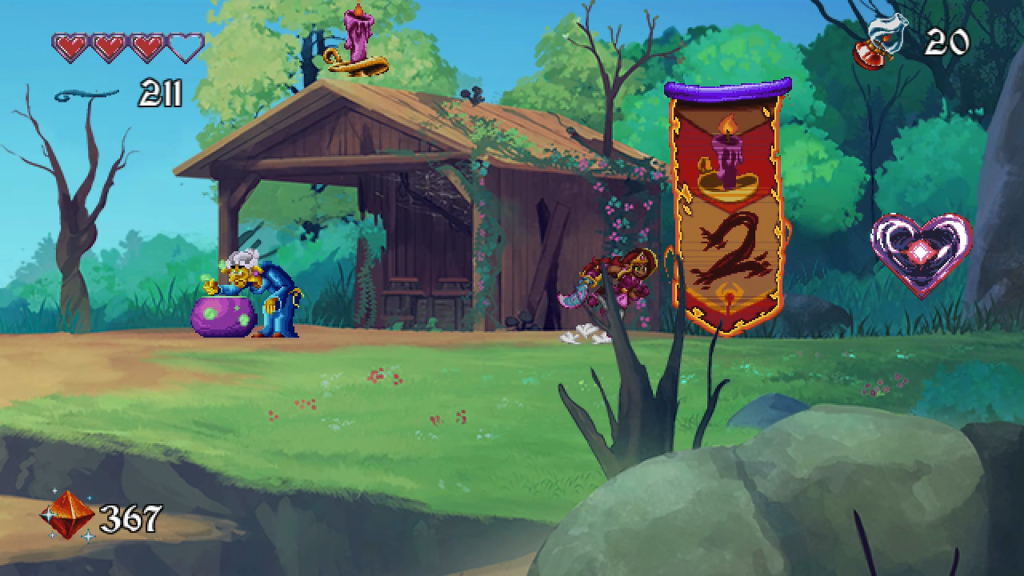
There are many reasons to revisit Faramore’s fourteen levels. Some passages are blocked by colored barriers which can only be removed when Arzette has learned to use the corresponding colored magic. Other areas, including ones that contain hit-point expanding heart containers and the bosses which protect the Jewel fragments, are blocked by enchanted tapestries which can only be removed using magic candles that are hidden in still other levels.
Almost every level has an NPC who wants an item delivered to them from another level. Which level these items are hidden in is a mystery, so I must pay close attention to descriptive clues given during their cutscenes to know where to deliver an item when it is discovered by Arzette. Many of these deliveries are optional, but completing them all bestows Arzette with her most powerful equipment, giving her the edge in the climactic battle with Daimur.
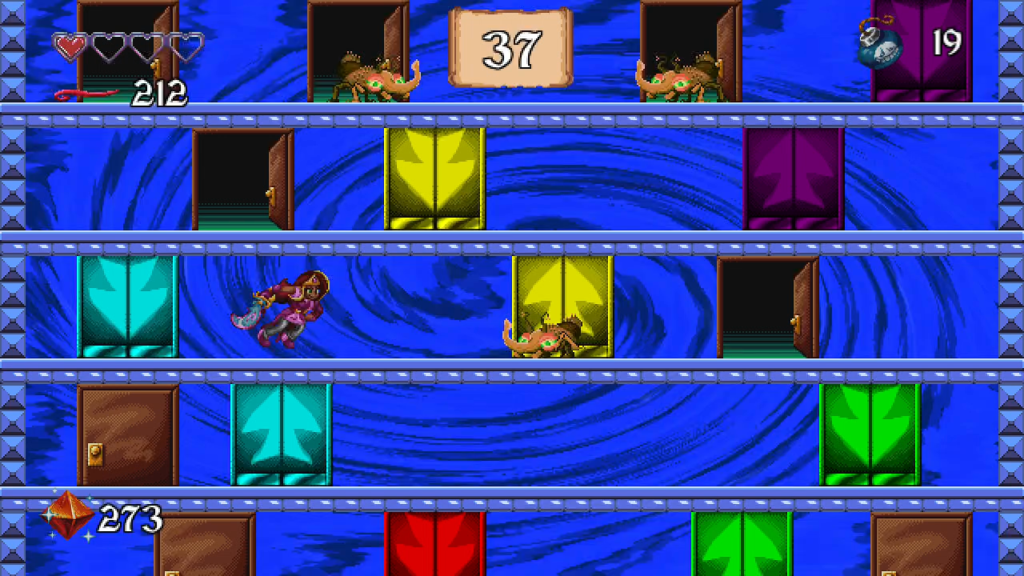
Bouncing around between all the levels is rewarding when a repeated visit still meaningfully advances Arzette’s quest. Going for one hundred percent completion is another matter. To get full credit for completing a level, Arzette must find and complete a minigame hidden inside it. She only gets one chance to complete the minigame; if she fails for any reason, she must play the entire level over to get credit for it.
Each level also contains a hidden coin. Most are hidden behind fake walls. These walls can be identified with careful observation, but their identifying features can be perhaps too subtle. The easy ones have torches sitting just inside their entrances, with the torch’s ambient light glowing from behind the wall. The more difficult hidden walls are recognizable only by a tiny imperfection to differentiate it from its solid neighbors. Thankfully, there is no useful reason to complete every minigame and find every coin except stubborn pride.
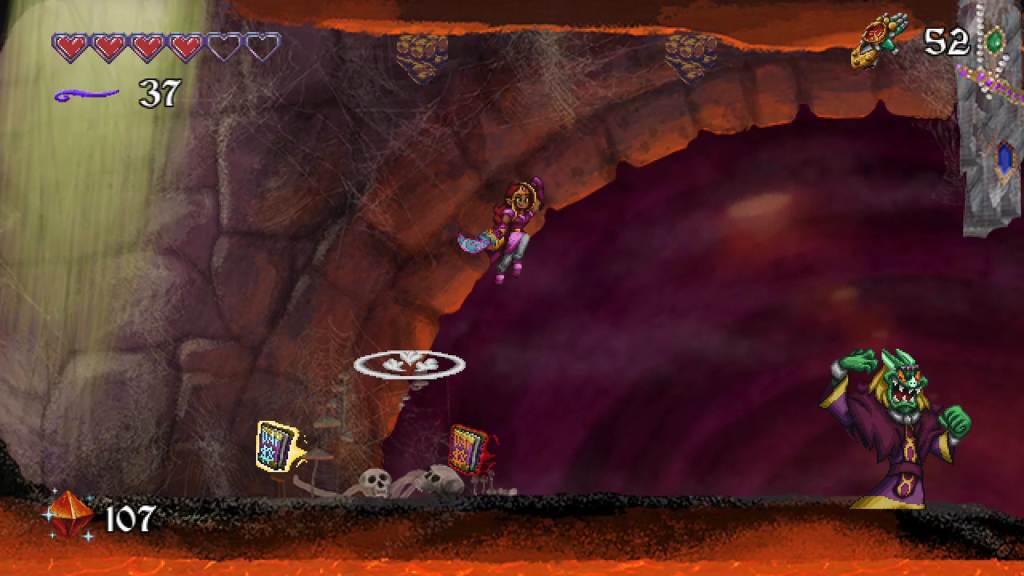
Arzette: The Jewel of Faramore could easily have been a joke. Its creators could have created parodies of the bizarre animations featured in Link: The Faces of Evil and Zelda: The Wand of Gamelon, scattered them across a lazy and rudimentary platformer, cashed in their flash-in-the-pan check, and moved on to their next moneymaking venture. But there’s thought and care here. This videogame answers the bold question: What if the CD-i Zelda videogames actually had potential? It makes smart choices about which elements to keep, which to improve, and which to replace, to create a fun videogame. I worry that the emphasis on playing and replaying short levels may feel repetitive, but that is my one misgiving. Arzette: The Jewel of Faramore is the Zelda CD-i videogames as they could have been, as they should have been.